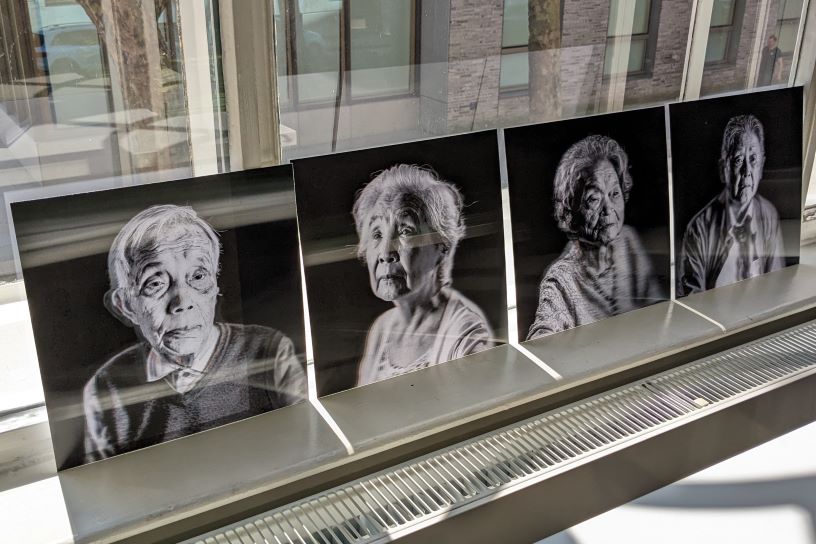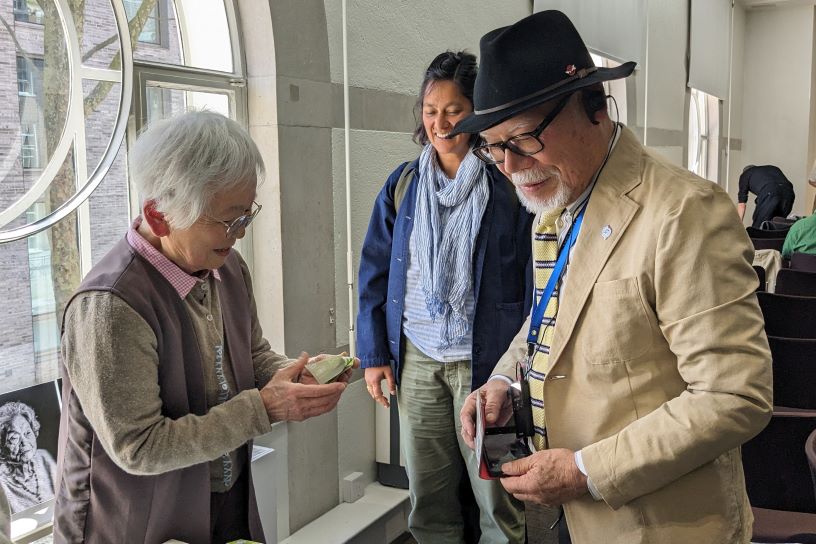Quakers host two survivors of atomic bombing of Japan in 1945
Nagasaki must be the last city in the world to ever experience an atomic bomb, two survivors of the bombings of Japan by the USA told a gathering in Friends House, London, last weekend.

With the Peace Boat's Voyage for a Nuclear-Free World docking in London, the two survivors and youth communicators travelling with them used the event at Quaker offices on 2 June to call for a nuclear-free world.
Toshiko Tanaka and Tadayoshi Ogawa represent some of the last living hibakusha, 11,000 remaining survivors of the atomic bombing of Hiroshima and Nagasaki, who are an average of 85 years old.
As the last generation able to share the experience of a nuclear weapons strike, Tadayoshi said that the use of nuclear weapons is an act against humanity.
The bombing of Hiroshima and Nagasaki on 6 and 9 August 1945, killed between 129,000 and 226,000 people (most of them civilians), and left many more dealing with radioactive fallout and emotional wounds.
As the Hibakusha described their experiences of nuclear attack, Labour leader Keir Starmer was on the election campaign trail, preparing to reaffirm his commitment to a nuclear deterrent “triple lock."
'I would like to tell the people they call “world leaders", who are interested in their own national interests… that in fact we live on something akin to a spaceship; a ship where we can spend our time fighting over borders, over resources, and if we do so then the spaceship and the life on it will suffer," said Toshiko.
“Instead, my message is that of reason, sharing and collaborating; of recognising how much more we can do, how much better we can do, by co-operating with each other to better manage this spaceship Earth, instead of thinking along the divisions of national borders."
The event was organised by Quakers in Britain, CND and Japan-based NGO Peace Boat, which organises global voyages to promote peace, human rights and sustainability.
It included a dramatic performance by Michael Mears (who created The Mistake), and the opportunity to fold peace cranes and paint anti-nuclear symbols.
Photographs from the 80,000 Voices "Portraits of the Hibakusha - 80 Years Remembered" exhibition, sponsored by Soka Gakkai International, were shown at the event.
In displaying these portraits, the hibakusha wish to stir the public's emotions and encourage introspection around nuclear weapons.
The Doomsday Clock, which symbolises the likelihood of a human-made global catastrophe, currently sits at 90 seconds to midnight, the closest to catastrophe it has ever been.
“In this time of unprecedented global danger, concerted action is required, and every second counts," said the Bulletin of the Atomic Scientists who set the clock.
Quakers view weapons of mass destruction to be immoral and illegal and work with other organisations, policy-makers and civil society to rid the world of nuclear weapons.
The survivors
Content warning: contains descriptions of the effect of nuclear weapons
Tadayoshi Ogawa – Nagasaki (pictured, right, with audience members above)
Ogawa was an infant at the time of the blast. Born just 1km from the hypocentre, he was a few kilometres away at the time of the bombing. When his father returned to their home, he found it destroyed and his relatives dead – he had to cremate them himself.
A photographer, Ogawa runs a project called 'Lest We Forget' – on 9 Aug every year at 11.02 (the time of the bombing) people take photographs of anything they hope will be preserved for future generations and submit them. He hopes to gather 1,000 photos by the centenary of the bombing, and his granddaughter (who is on the Peace Boat voyage with him and was at the event) will continue the project.
Toshiko Tanaka – Hiroshima
Six at the time of the blast, Tanaka lived very close to the hypocentre of the blast but moved 2km away just a week before the bombing. All her classmates were killed. She was so badly burned and covered in ash that her own mother didn't recognise her, and she was unconscious for several days.
Tanaka still remembers the taste of the dust that filled her mouth when the bomb exploded, and the smell of bodies being cremated all around the city. She suffered constant fevers and headaches. When she had her first child her husband was scared because many babies of survivors suffered birth defects – when the baby was born, he checked their fingers and toes.
